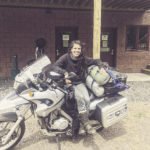What is it about the whitetail deer that makes so many people obsessed with them?
I can say without a shadow of a doubt that I am crazy about both deer and deer hunting and have been for the better part of my life. Yet deer are no longer rare in the northwoods of Ontario and are ridiculously abundant across much of North America. They have even invaded many urban centres, finding homes in bush lots and green spaces very few mammals of a comparable size would be comfortable in. Deer have even begun regularly raiding our backyard garden even though we live in the heart of Thunder Bay suburbia. Normally, creatures that reach the level of potential pest lose some lustre among hunters—Canada geese come to mind—but deer have not suffered this fate. The whitetail deer is a phenomenon, and drives an ever growing multi-million dollar hunting industry.
But let me back up a bit and give you a quick overview of my personal history with deer. I grew up in a family where deer hunting was a tradition. My Grandfather Ora was a serious deer hunter, and my father Gordon Sr. did his best to follow in those footsteps. However, in the 1970s, when my Dad was getting serious about hunting and I was starting, deer were rare in the northwoods. And it’s fair to say there was a bit of a steep learning curve involved with backwoods deer hunting. From the time I was 17, until my late 20s, I did not kill a whitetail deer. I missed a couple due to buck fever, and startled many. Everything you could do wrong, this writer did. However, all that failure laid a groundwork for success. When I finally snapped out of the slump, it happened in a big way. There would be no turning back. Yet being successful at deer hunting has not lessened the fever to do it. It grows with each passing year.
So, for the past three decades or so, I’ve spent hundreds—perhaps thousands—of hours thinking about, setting up for and hunting whitetail deer. I can’t think of any other recreational activity that has taken up more of my time and energy. My deer hunting energy has so far been largely dedicated to northwestern Ontario, but not much of this great land has been missed. My Dad, two sons, and various friends have hunted around Emo, Fort Frances, Kenora, Atikokan, Barwick, Dryden, Vermilion Bay, Sioux Lookout, Upsala, Shabaqua, Dorion, Nipigon and many places in between. The incredible thing about hunting these diverse areas is you get to see just how much different habitat whitetail can thrive in. Around Dryden, Fort Frances and Emo, there are huge fields the deer can feed in, with mixed forests scattered in between. It’s prime for growing both large bucks and substantial numbers of animals. On the flip side, the hunting around places like Nipigon and Sioux Lookout is largely in thick bush with the occasional power line intersecting. It is a harsh environment and it’s not easy pickings for the deer. Food is scarce. However, given the right conditions, deer can thrive in this harsh habitat as well. Some of the very largest bucks I’ve ever laid eyes on were living in thick, boreal forest country.
One of the lessons learned about the whitetail deer is though the species has an incredible ability to survive the northern winter, it is a thin line between life and death. When I started hunting deer in the 1970s, the entire northern Ontario herd had been all but wiped out by two horrible winters in the late 1960s. The herd slowly rebuilt around Thunder Bay and was doing well until the terrible winter of 1996. Cold and unbelievable snow depth once again led to mass die offs of deer that winter.
It took another decade to rebuild the herd again, and deer numbers were exploding in 2004 and 2005. However, two long winters in 2014 and 2015 once again put the boots to the deer. It was not a total wipe out, but many areas like Dryden and Vermilion Bay saw a large chunk of the herd taken out. The big bucks mostly vanished. Watching deer come out of a deep, cold snow season is difficult. I left my trail cams out during the last two bad winters and had deer chest high in snow. Some of the animals were so emaciated you could see ribs.
Nature is cruel, yet deer are remarkably resilient. Natural selection seems to be making our northern deer larger and more able to rebound from harsh winters. As the moose herd pushes ever further north, it seems clear whitetail deer will be the primary ungulate on the northern Ontario landscape. No one wants to see fewer moose, but whitetail deer are a truly wondrous animal.
And it looks like they are here in the north to stay. I’m cool with that.




